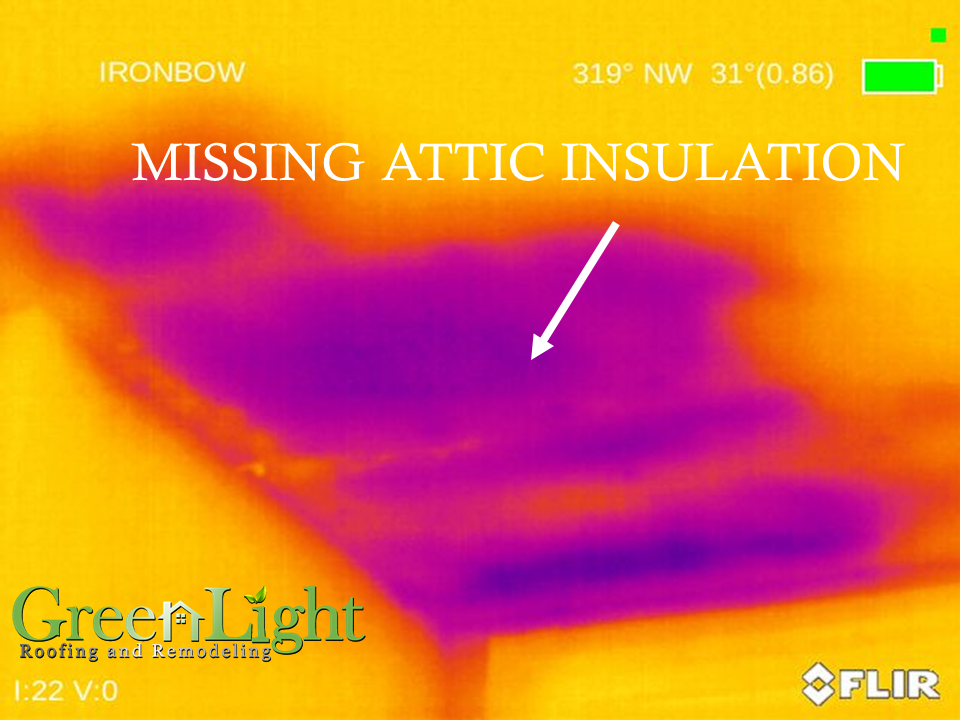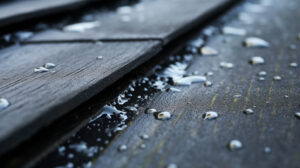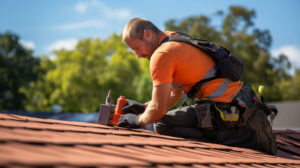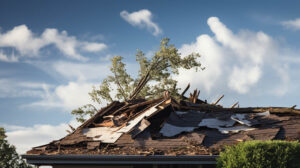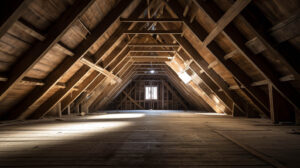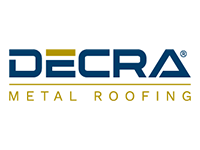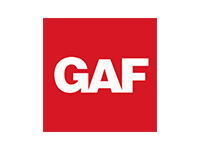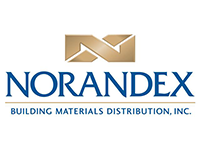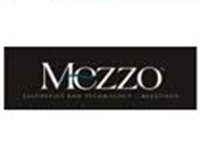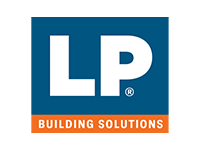Are you planning to insulate your attic? While adding insulation to your attic is an excellent way to save energy and increase the comfort of your home, it’s important to consider fire safety as well. Insulation is a potential fire hazard, and if not installed correctly, it can increase the risk of a house fire. In this article, we will explore the importance of attic insulation and fire safety, and what you need to know before insulating your attic.
Why is attic insulation important?
Attic insulation plays a vital role in keeping your home comfortable and energy-efficient. During the winter months, insulation helps to trap heat inside your home, reducing the amount of energy needed to keep your home warm. In the summer, insulation helps to keep the heat out, reducing the amount of energy needed to cool your home.
Without adequate insulation, your home will be less energy-efficient, resulting in higher energy bills and less comfortable living space. Additionally, insulation can help to reduce noise levels in your home, making it a more peaceful and relaxing environment.
The potential fire hazard of insulation
While insulation can bring numerous benefits, it also poses a potential fire hazard. Insulation is made from materials that are combustible, and if not installed correctly, it can increase the risk of a house fire.
For example, insulation can be a fuel source for a fire, allowing it to spread more quickly. Additionally, if insulation is installed too close to a light fixture or an improperly insulated recessed light, it can overheat and ignite the insulation.
Common causes of attic fires
Attic fires are a homeowner’s worst nightmare. They can cause serious damage to your property and put your loved ones at risk. While there are many causes of house fires, attic fires are particularly devastating due to the confined space in which they occur. Attic fires can be caused by various factors, including:
- Electrical issues
- Heating equipment malfunctions
- Improper storage of combustible materials.
However, the most common cause of attic fires is electrical wiring. Older homes may have outdated electrical systems that are not capable of handling the electrical demands of modern appliances and electronics. As a result, overloaded electrical circuits can cause electrical fires, which can quickly spread to the insulation in your attic.
Choosing the right insulation and fire-resistant materials
When choosing insulation material for your attic, it’s essential to consider fire safety. Some insulation materials, such as cellulose, are more fire-resistant than others, such as fiberglass.
Cellulose insulation is made from recycled paper, which has been treated with fire-retardant chemicals to make it more resistant to fire. Fiberglass insulation, on the other hand, is made from tiny glass fibers, which can melt and ignite when exposed to high heat.
How to install insulation safely
Installing insulation in your attic can be a DIY project, but it’s crucial to do it safely. Before you start, make sure to read the manufacturer’s instructions carefully and follow them closely.
Additionally, it’s essential to wear protective clothing, including gloves, eye protection, and a respirator mask. Insulation can irritate your skin and lungs, so it’s important to take precautions.
When installing insulation, make sure to keep it at least three inches away from any heat-generating fixtures, such as recessed lights or chimneys. If necessary, use a barrier, such as a metal shield or insulation guard, to prevent the insulation from touching these fixtures.
Other fire safety measures for your attic
When it comes to fire safety, prevention is always better than cure. While knowing the common causes of attic fires is important, it is equally essential to take appropriate measures to prevent them. In addition to proper insulation installation, there are other fire safety measures you can take to minimize the risk of an attic fire. These include:
Install Smoke Detectors – Early Warning System
Smoke detectors are the first line of defense against attic fires. Installing smoke detectors in your attic and throughout your home can provide early warning in case of a fire, allowing you to take appropriate action before it’s too late. Make sure to test your smoke detectors regularly and replace the batteries at least once a year.
Use Fire Retardant Materials – Slow the Spread
In addition to the other fire safety measures mentioned earlier, using fire retardant materials in your attic can also help slow down the spread of fire in case of an emergency. Fire retardant materials are designed to resist ignition and slow down the spread of fire.
Here are some fire retardant materials you can use in your attic to improve fire safety:
- Fire-retardant Insulation
- Fire-resistant Drywall
- Fire-resistant Roofing Materials
- Fire-resistant Paint
Using fire-resistant paint in your attic can also help prevent the spread of fire. Fire-resistant paint contains special chemicals that make it harder for the fire to spread. It can be used on walls, ceilings, and other surfaces in your attic.
Keep Your Attic Clean and Clutter-Free – Prevent Fuel
A cluttered and dirty attic can provide fuel for a fire. To prevent fires, keep your attic clean and clutter-free. Avoid storing flammable materials in your attic, and dispose of any old papers, cardboard boxes, or other materials that could catch fire easily.
Proper Ventilation – Reduce the Heat
Proper ventilation is key to reducing the risk of attic fires. Good ventilation can help regulate the temperature in your attic and prevent heat buildup, which can increase the risk of a fire. Make sure your attic has sufficient vents and that they are kept clear of debris.
Following Building Code – Ensure Safety Standards
Following the building code is one of the most crucial fire safety measures you can take for your attic. Building codes are designed to ensure that all structures meet certain safety standards, including fire safety standards. Therefore, it’s essential to follow the building code when constructing or renovating your attic to ensure it’s safe from fire hazards.
Fire Extinguishers – Keep Prepared
Another important fire safety measure for your attic is to have fire extinguishers readily available. In the event of a fire, having a fire extinguisher on hand can help you extinguish the fire before it spreads and causes significant damage to your property.
Having fire extinguishers in your attic is an excellent fire safety measure. However, it’s essential to remember that fire extinguishers are only effective if they’re used correctly. Make sure you know how to use the fire extinguisher, keep it in an easily accessible location, and regularly check and maintain it to ensure it’s in good working condition.
By taking these precautions, you can help to minimize the risk of a fire starting in your attic and potentially spreading to the rest of your home.
Signs that your attic insulation may be a fire hazard
It’s essential to be aware of the signs that your attic insulation may be a fire hazard. These signs include:
- Insulation that is discolored or appears to be burnt.
- Insulation that is compressed or squished, can reduce its fire resistance.
- Insulation that is installed too close to heat-generating fixtures or electrical wiring.
- A strong, smoky odor coming from your attic.
- If you notice any of these signs, it’s essential to have your attic insulation inspected by a professional. They can assess the condition of your insulation and recommend any necessary repairs or replacements to ensure your home is safe from fire hazards.
Importance of regular inspection and maintenance
Regular inspection and maintenance of your attic insulation are crucial for ensuring your home’s safety. Insulation can degrade over time, losing its fire resistance and energy efficiency. Additionally, insulation can become compressed or squished, reducing its effectiveness.
By having your attic insulation inspected and maintained regularly, you can identify and address any issues before they become major problems. This can help to ensure that your home remains safe, comfortable, and energy-efficient for years to come.
Conclusion
Attic insulation is an essential component of any home’s energy efficiency and comfort. However, it’s important to consider fire safety when installing and maintaining your insulation. By choosing the right insulation material, installing it safely, and taking other fire safety measures, you can minimize the risk of a fire starting in your attic.
Regular inspection and maintenance of your attic insulation can also help to ensure that it remains effective and safe over time. By being aware of the potential fire hazards of insulation and taking the necessary precautions, you can enjoy all the benefits of attic insulation while keeping your home safe.

